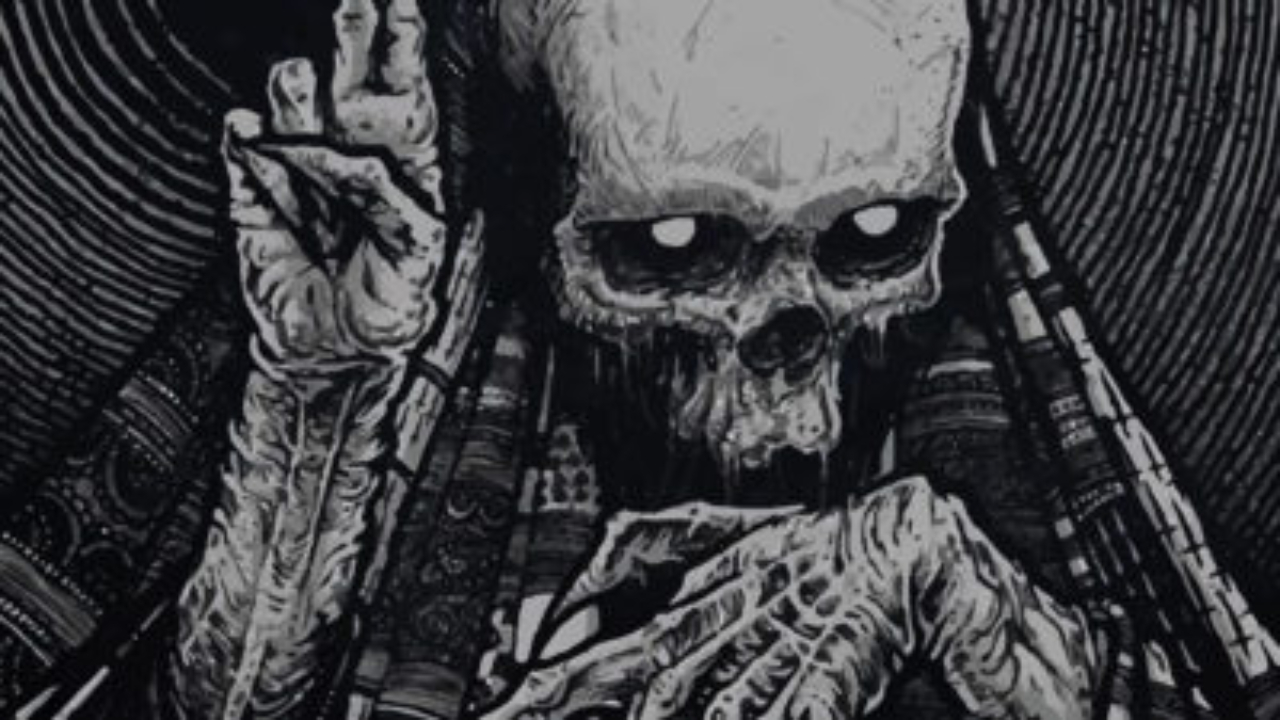-
play_arrow
New 365
-
play_arrow
KTLK-dB RADIO ONLINE 24/7

–written by Anthony Tyler–
What follows is an excerpt of several pages from my book, nearly an entire chapter! So if you like what you read, get a copy of Dive Manual: Empirical Investigations of Mysticism here: https://www.amazon.com/Dive-Manual-Empirical-Investigations-Mysticism-ebook/dp/B084R8PTYW
The excerpt is focused on an analysis of sleep paralysis through the lens of Jungian psychology, diving deep into the history of the ailment throughout comparative religion and time the world over.
Since sleep paralysis is as prevalent in today’s day and age as it ever was, I thought this would be a worthwhile excerpt to post. It truly represents a fascinating and terrifying threshold somewhere between practical psychology, ancient superstitions, and unexplainable phenomena.
Here it goes:
It often goes unnoticed today that these shadow people have been seen throughout history, across the world for thousands of years, and became unanimous in the ancient world for the incubus and succubus (the dark anima and animus), which comes to steal the soul of the human in the night. And if we look elsewhere still, we sometimes find this same archetype depicted unrelated to sleep and living near bodies of water, like the Slavic Rusalka or the Amazonian Yacuruna.
Each given culture obviously has its own specific lore surrounding the occurrences, but the archetypal equivalencies are all astounding—especially when considering sleep paralysis. This nocturnal terror is everywhere and has been there since the dawn of recorded history—from Africa, to Asia, all throughout Europe, Persia, the Americas, and it is not a matter of question that this is a very common human experience with biological underpinnings.
In the medieval text, The Alphabet of Ben Sira, we find the classical origin story of Lilith as it is known today in the west.
God created a female out of “filth and sediment” for Adam, and this female was named Lilith. But she was created with a sense of restlessness and rebelliousness that God had apparently not accounted for. After a brief and disgruntled relationship, she left the garden in protest, claiming that Adam was something more like a slaveholder than a lover, and fled to live near the Red Sea. Here, she is said to have remained for some time, spawning over one hundred demon children a day. When God and his angels found her and demanded she return to Adam or be executed, she refused and sought vengeance by birthing the plagues of mankind, strangling young men in their sleep and “stealing their seed” in their dreams, causing epilepsy in people, and eating children from their cribs in the dead of night.
It should certainly not go unnoted that there is a genuine level of sympathy for Lilith to be felt in this story, being a creature that is apparently just following her nature, only to be punished by her creator and lover, thus instilling a malevolence within her through God’s given punishments. It certainly begs the question why a creature would be scorned for its very nature, and this also begs the question of if Lilith would’ve become so wrathful if not for God’s condemnation of her. This sympathy does not justify the demonic symbolism associated with the archetype, but certainly serves to deepen the scope of the archetype itself, and let us recall that in most pagan symbolism, Lilith tends to be celebrated as a goddess of Nature. A somewhat similar twist-of-character can be noted of the positive pagan deity, Pan, which helped form the inspirations of the horns and hooves of Satan. As we see, not even these archetypal characters are entirely clear-cut— such is the nature of human perceptibility.
It is unknown who originally wrote The Alphabet of Ben Sira, but its influence in rabbinic studies, mysticism, and Jewish folklore is undeniable. And, because of the archetype’s strong Abrahamic underpinnings, Lilith has become an intrinsic staple of western esotericism.
She, as you now know, grew to be considered the Queen of Hell, sometimes even the bride of Lucifer; although, technically, she is classically married to Samael, the archangel of death and ruler under God of the fifth sphere of Heaven. She was sometimes even associated with the very snake that tempted Adam and Eve in the garden. Indeed, it is very interesting to note how Michelangelo painted a feminine snake coiled around the Tree of Knowledge in The Temptation of Adam and Eve atop the Sistine Chapel. Since it is left a bit open for debate as to what exactly the artist intended to depict, many naturally interpret this as Lilith. From an archetypal perspective, it seems hard to call Michelangelo’s serpent as anything other than Lilithian.
Today, Lilith survives overall as a poignant double-edged symbol of both feminine empowerment and destruction. As we shall discuss in a moment, the deeper nuance to the dark anima is part of the alchemical transmutation.
But the character of Lilith is much older than the ancient Kabbalists, and interestingly, the ancient stone Sumerian King List from 200 BC states that the father of Gilgamesh is a lilu, which is a Sumerian incubus or male vampire. Lilitu, ardat lili, and ardat lilu were different classifications of evil spirits. Ardat lili was the succubus.
At its earliest form, the Lilith archetype is very clearly a heuristic depiction of mental ailments, and even sometimes physical. It is a simple empirical deduction, therefore, that the earliest forms of demonology, psychoanalysis, and even literature as we know it, all began right around the same time. Consequently, the further we analyze the Lilith archetype throughout the different aspects of theological doctrines, we find that wherever Lilith follows, psychoanalysis, mental illness, and demonology are right behind.
It is at this time that I feel it necessary to supply a quote from Fortean investigator, John Keel, “The most fearsome monsters of all may inhabit the dark corners of our mind waiting for us to release them through our beliefs and gullibility. The phenomenon feeds on fear and belief. Sometimes it destroys us altogether, other times it leads us upwards into the labyrinth of electromagnetic frequencies that form a curtain in the area we call windows and stalk us to drink our blood and create all kinds of mischievous beliefs and misconceptions in our feeble little terrestrial minds.” [Complete Guide to Mysterious Beings p. 223]
For contextual reference, we may see the Eve and Lilith archetypes as two sides of the same coin, the inversions of one another. But the history of Lilith, the dark anima, naturally parallels the history of the Great Mother archetype herself. Isis, worshipped as the Great Mother of the Egyptian Mysteries, was the mother of the cosmos, of magick, the arts, and of the unknown. She had a deep callousness amidst her warmth, which is illustrated well by the Egyptian mystery initiation rites. The rites themselves were perilous, traumatic, and potentially fatal, but the promise was not only a liberation of the self, but an opening to vast wealth of ancient science and lineage. True to the alchemical symbolism, Isis was equipped with a motherly love as well as a sense of wrathfulness and punished humans like a mother parenting her child. She represented a crystalized state, the coldness that the darkness can bring, and the alchemical distillation of the physical, mental and spiritual that is inclined to occur in the cold. Lilith is the avatar of the Great Mother’s alchemical wrath, which is the corrosion of non-useful elements so that only the essential, divine elements remain.
In the Vedic and Tantric symbolisms of the east, she is called Kali. She is the goddess of creation and destruction, representing the cycle of birth and death, the diurnal mind-state, and the states of comfort and torment that can come from the biological mother. To the enemies of Kali’s worshippers, she was as wrathful and demonic as a mother grizzly bear protecting her cub, and if Kali was crossed by her worshippers, she would bring wrath like a mother spanking her child. Kali, like Isis and Lilith, was represented by total blackness and the Moon.
In Babylon, the Great Mother was Ishtar, and in Mesopotamia she saw fruition as Inanna, coupled with the Babylonian inspirations of Ishtar. She then became hellenized into Ashtorteth (or Astarte). From here, her archetype developed within the Mystery Initiations with the involvement of the Egyptian goddess Isis, and to the nearby Greeks she was Ananke (but the Greeks and the Romans often called her Isis as well). While I am aware that I am being slightly reductionistic in this brief historical analysis, it seems from here that the Hebrew took what they had heard about the Mother of the Mysteries and turned her into the full-fledged demoness they saw her to be. Thus, eventually, the Queen of the Qliphoth was shaped into what she is today.
The question now at hand, however, is the difference between psychosis and therapy when considering spirituality. What, really, is the difference between a positive and negative spiritual experience? After all, a Christian will say that a pagan’s positive spiritual experience is actually negative. How does one scientifically separate the wheat from the chaff—the therapeutic from the neurotic?
Ancient Egyptian philosopher, Iamblichus touched on this in his classical work, Theurgia, in chapter nine, entitled Daemons: “It is declared, most irrationally, that the origin of the divining art is ‘the mania that occurs in diseases.’ For it sets forth enthusiasm or divine inspiration as due to melancholia or the redundancy of black bile, the perverted conditions of drunkenness, and the fury incident to, rabid dogs. It is necessary from the beginning, therefore, to make the distinction of two species of ecstasy or entrancement, of which one causes degeneration to an inferior condition, and fills with imbecility and insanity; but the other imparts benefits that are more precious than intelligence [Great Mother]. The former species [i.e. that of entrancement] wanders to a disorderly, discordant and worldly activity; but the latter gives itself to the Supreme Cause [Great Father] which directs the orderly arrangement of things in the world [i.e. that of ecstasy]. The former, being destitute of real knowledge, is led aside from good sense; but the latter is united with those superior sources of wisdom that transcend all the sagacity in us. The former is constantly changing, but the latter is unchangeable. The former is contrary to nature, but the latter is superior to nature. The former brings down the soul into lower conditions, but the latter leads it upward. The former places the subject entirely outside of the divine apportionment, but the latter joins, unites him to it.”
Until our own minds are purged, everything will remain distorted. And when we start diving into metaphysical phenomena—examining the moving train of existence—we are deterministically destined to collide with our distortions. If we are not prepared for such a collision, the sight will likely prove to be grotesque and even scarring. And if not, it might prove to be so alluring that we gleefully, unknowingly leap to our deaths.
This in mind, it might be pertinent to know that the word “nightmare” came from the mare or mara of the night, which is another name for the succubus. Lilith, the mare of the night was said to slink through the keyholes of bedrooms, rest her knees on the chest of the sleeper, and strangle them. Often, a visit from a night mare was considered in folklore to be a brush with death, and the survival of the “Grim Reaper” character today seems to stem from this idea, albeit in a more masculinized tone. Some encounters will have two or more figures. We may find one resting on top of our chest if we have fallen asleep facing the ceiling, with another looming over our bedside. Often, but not always, their eyes are red.
It is also fascinating to note that as Gautama Buddha sat under the bodhi, the arch demoness, Mara, was the ultimate temptress, proving to be his final barrier to enlightenment. Not surprisingly, this showdown was set at night, and it is generally considered that the Buddha wouldn’t have even reached enlightenment without the trials that Mara tested him with under the bodhi. It is here that we should especially recall what Iamblichus noted, because this is where culture and folklore inevitably spill into the dark arts, psychosis, and evil spirits.
Many scientists and psychologists today look at the shadow people phenomena as meaningless hallucinatory side-effects of the sleep-paralysis event. While I don’t disagree with any of the modern science about sleep paralysis, I think it is very haphazard to consider the minutiae of the hallucinations to be meaningless.
To its credit, the psychiatric community has begun to correlate neurosis with the onset of sleep paralysis symptoms. It has become noted that sleep paralysis is more likely to occur if the subject has a history with severe PTSD from something like sexual abuse and violent trauma, but also things like anxiety disorders, panic disorders, narcolepsy and even Parkinson’s disease.
I have noted previously that hypnosis is a psychological gateway to the nervous system. This in mind, it appears that sleep paralysis and its onset of side effects stem from some overstimulation, even mismanagement of the human nervous system. It is like a pot boiling over, creating sleep paralysis like the bubbles from the heat. Something is jamming the nervous system’s psychological gateways, mucking it up.
I have thankfully only experienced sleep paralysis twice in my life, both as a child, and I do not remember any specifically terrifying encounters—although when I found that I was paralyzed I became very frightened all the same.
From here, it should be emphatically stated that people who experience sleep paralysis are not psychotic, nor are they being punished by God or haunted by Satan. But they are suffering from a psychic phantom limb.
—
In 1999, the neuroscientist VS Ramachandran wrote in his book, Phantoms in the Brain, about the effect of the neurological “mirror system” in the cerebral cortex by detailing his own research and practices as a medical professional. Interestingly, some of his recounted stories, supplemented by the data, tell of helping patients rehabilitate from neurological ailments like phantom limb syndrome.
This phantom limb is, in layman’s terms, the brain’s attempt to neurologically account for the limb that is no longer connected to the body. When the brain finds that there is nothing left to neurologically “reflect”, or no limb to process, this lack of limb becomes an antithesis for the brain, causing most patients to feel extreme forms of pain and tension from this non-existent limb.
In a famous anecdote given by Ramachandran in the book, he tells of holding a mirror up to the arm of a patient, creating the optical illusion that the reflection of the patient’s remaining hand replaced the hand missing. When the patient wiggled his remaining hand, he watched its reflection wiggle, and as the man watched his illusory or reflective limb wiggle, the pain disappeared.
Ramachandran tested this on many other phantom limb patients, finding that it did not work with every single person, but it did work with the overwhelming majority, even taking steps to account for placebo effects. While it still might be the case that placebo has some sort of aid in this process, the doctor tried to use other systems, like electromagnetic stimulation, to see if suggesting its efficacy to a patient would produce similarly extraordinary results. They did not. It was clear that mirror-neurons were a direct mechanism at play here.
Since then, many other doctors have taken this mirror-box-therapy and run with it, experimenting with many patients and finding remarkable results with implications that the scientific community is still trying to comprehend. In effect, phantom limb syndrome is still something that is only somewhat understood. Some of it could be attributed to a person’s brain missing the feedback from their limbs no longer there, but actually, many people born without limbs experience vivid phantom limbs. This seems to suggest some evolutionary neurobiological mechanisms at play. Whether or not we have limbs to begin with, our human brains have developed with the propensity and impulse to incorporate these limbs anyway. To a degree, it might be as reflexive as breathing.
Now, let’s consider this from a different vantage point. If a person can have a phantom limb stemming from innate neurobiological mechanisms (further strengthened by the repetition of having once had a limb, in the case of amputees), then might we be able to apply this to the psyche? Suppose, then, that we have “phantom limbs” of the psyche—and not just of the appendages.
Actually, doesn’t this already sound a whole hell of a lot like the shadow-complex of analytic psychology?
It should.
As a non-corporeal phantom limb is exactly how the shadow complex unconsciously operates. But if this is so, the question of how to relieve the tension still remains. We must find a looking glass—a way with which to observe the blind spots of the psyche.
So, the phantom limb appears to be some sort of forced projection out of the unconscious mind—an attempt to purge tension. Suppose, then, that we have “phantom limbs” of the mind— where is our neuroscientist to hold the mirror so that we may observe our reflection? Aside from art as therapy and the experiences of dreaming, where is some even harder data that we can sink our teeth into? Furthermore, once the limb is reflected, how do we wiggle it? How do we not only reflect our missing limbs, but purge the tension as well?
—
As I began to ask more and more people about sleep paralysis, I was astounded how many people suffered from it, and how many people were willing to suggest that it was a real encounter of some kind. Many of these experiencers detailed to me their recurring sleep paralysis phenomena, and these are people from all walks of life, all backgrounds.
Every single experiencer I talked to wondered if they had been visited by something. Some of the people I spoke with were even considering the idea that they had been abducted by extraterrestrials. This is a notion I would somewhat agree with yet not subscribe to, for I consider aliens to be another rendition of classical archetypal phenomenology, leaving room for the possibility of other-worldly beings but not assuming such.
In terms of health and psychology, let’s consider the implications of the brain’s sleep cycle—the waves of the ocean. During the average sleep, a person passes from the first two stages (transitioning from alpha to theta waves) into the third and fourth stages of sleep (predominated by delta waves). Stage four is where somnambulism (sleepwalking) will occur, and the fifth stage is the REM cycle. A person does not cycle through these sleep stages in a chronological order, but more so bobs and weaves through it. However, all humans phase through these sleep cycles with similar patterns, at similar rates.
It is most commonly stated that sleep paralysis occurs during stage five REM, but it also appears to occur around stage four, when a person begins drifting into deepest levels of sleep. When it occurs during entry into REM (or entry into sleep overall), it is considered hypnogogic—the suffix of the word meaning to lead forth or guide. Occurrence upon exiting stage five (usually implying that the sleeper has woken up) is hypnopompic, the suffix essentially meaning to send away.
In the practice and study of hypnotherapy, somnambulism is considered an outside-directed state, meaning that it is generally a metaphorical process of reading a script. There must be some sort of format given for the somnambulism to occur, otherwise there is no reason for any animation to occur to begin with. For these reasons, somnambulism is an intricate and essential state in any form of hypnosis. But this eerily begs the question: what is providing the script for the sleeper? We may certainly say that the unconscious mind provides such a script, but this brings with it more questions than answers.
It is worth noting that somnambulism occurs during stage four of sleep, leaving it right on the heels of the sleep-paralysis spectrum. Of course, these phenomena are polar-opposites on the face of it, but they are predicated on the same basis: the sleeper losing certain large faculties of self-control. Along similar lines of thinking: common sleep paralysis folklore suggested that a person never fall asleep supine, with the chest up to the sky. This was considered easy access for the demon to sit on the chest and strangle the sleeper. And scientific studies have shown that posture maintained during sleep is a determinant factor in whether a person will experience sleep paralysis— sleeping supine apparently having a higher statistical occurrence of sleep paralysis than any other sleep-posture.
A study conducted in 2014 by Jahal Baland and VS Ramachandran reads, “We specifically propose that this perceived intruder is the result of a hallucinated projection of the genetically ‘hard-wired’ body image (homunculus), in the right parietal region; namely, the same circuits that dictate aesthetic and sexual preference of body morphology.” A follow-up study by the same scientists was also released in 2017, further relating the phenomenology of the shadow people to the brain’s neurological mirror-system—which we have discussed the implications of already.
Another study even managed to associate these hellish symptoms with biophenomenological preconditions. “One factor, labeled Intruder, consisting of sensed presence, fear, and auditory and visual hallucinations, is conjectured to originate in a hypervigilant state initiated in the midbrain. Another factor, Incubus, comprising pressure on the chest, breathing difficulties, and pain, is attributed to effects of hyperpolarization of motoneurons on perceptions of respiration [paralysis of respiratory system]… A third factor, labeled Unusual Bodily Experiences, consisting of floating/flying sensations, out-of-body experiences, and feelings of bliss, is related to physically impossible experiences generated by conflicts of endogenous and exogenous activation related to body position, orientation, and movement. Implications of this last factor for understanding of orientational primacy in self-consciousness are considered. Central features of the model developed here are consistent with recent work on hallucinations associated with hypnosis and schizophrenia.” [Cheyne, J. Rueffer, S. Newby-Clark, I. 1999.]
So, if science can deduce a cohesive framework of bio-phenomenology that describes sleep paralysis events, and this scientific framework is in an obvious explanatory accordance with the archetypal allegories of folklore—what could this imply about the archetypes of angels, demons, and gods overall? And what types of psychic-phantom-limbs could this approach help heal?
Furthermore, what could this help explain about the psychedelic experience, or even unexplainable phenomena like the paranormal or cryptid monsters in the wilderness? This question is, admittedly, based purely on speculation—but it’s an idea grounded by data and I think it is much more reasonable than many of the other ontological theories of the unexplainable.
Could it be that these archetypes are embodiments of an analytic framework that is imbedded within the psyche? Yes, this is absolutely the case, including the case of sleep paralysis. But are they conscious? Well, even Jung saw these archetypal qualities as autonomous, and I think this is indeed the case—but sentience is a question that will be heavily analyzed soon. The short answer here is: no, they are not sentient, but I say this with a certain wiggle-room…
The important thing to take away from all this is that the dark aspects of the anima pave the way for the beatific visions. In times of crisis (brought by the shadow), both the anima and animus prime the individual psyche for positive revelations. It is for this reason and others that Lilith is so very important to understand, and why her siren qliphoth are necessary tools for diagnosis. The unconscious mind is projecting, telling us that something is very, very wrong with our current systems—it is telling us that we have lost our synthesis, and that we are descending into an internal chaos…
In the beginning of Goethe’s Faust, Dr. Faust is given a magical potion to camouflage him with seductive youthful looks, enabling him and the lovely young woman, Gretchen, to fall in love with him. She is a pious, pure, Christian girl and Faust is quite rude to her at first, but she becomes captivated by him. Mephistopheles manages to arrange a meeting for Faust and the woman, and their subsequent relationship results in the death of her mother and brother at the hand of Faust himself. Gretchen even becomes pregnant with Faust’s child during it all. Gretchen soon finds herself struggling, her guilt of the pregnancy being personified as an evil spirit as she prays to the Virgin Mary in the church at one point. Herein the story Faust recognizes his time to exit and leaves Gretchen to visit the sabbath of the witch, Walpurgis Night.
Faust is enamored by a woman he meets here, the woman being none other than Lilith. In the scene, Mephistopheles introduces Lilith to Faust, telling him,
“Beware the lure within her lovely tresses,
The splendid sole adornment of her hair!
When she succeeds therewith a youth to snare,
Not soon again she frees him from her jesses.”
When Faust and Lilith begin dancing, he says to her,
“A lovely dream once came to me;
I then beheld an apple-tree,
And there two fairest apples shone:
They lured me so, I climbed thereon.”
To which Lilith replied,
“Since first in Paradise they grew;
And I am moved with joy, to know
That such within my garden grow.”
[Goethe’s Faust, Act I, Scene XXI]
After their interaction, he witnesses Lilith’s face form into Medusa—the feminine shadow, the personification of his guilt for Gretchen. Goethe’s brief depiction of Lilith is easily the best summary of her overall archetypal context and significance. Here, she represents allure to Faust, an opportunity for the depths of hedonism, but at the last moment she presents the opportunity for redemption by her very nature, reminding Faust of his responsibility to Gretchen and the opportunity to forego Mephistopheles’ current influences, giving him opportunity for both decisions.
As I explained, the aspects of the dark anima are entirely necessary because they ultimately allude to the deeper mechanisms of the alchemical transmutation. Without an encompassing understanding of their transmutational representation, the focus of these feminine archetypes can easily be lost, and begin to embody demonic qualities. And, of course, the same can be said of the masculine.
—-
This marks the end of the excerpt, so if you liked what you read, I invite you to purchase Dive Manual and read further! or check out one of my many interviews here:
Written by: Anthony Tyler
Astral Travel Encounters Hauntings Horror Nightmares OBE Sleep Paralysis
Similar posts
Become an Outsider and stay up-to-date with all things fringe
Contact Us
- +1 501 777 5631
- [email protected]
- DMCA Notification
COPYRIGHT FRINGE MEDIA GROUP LLC





